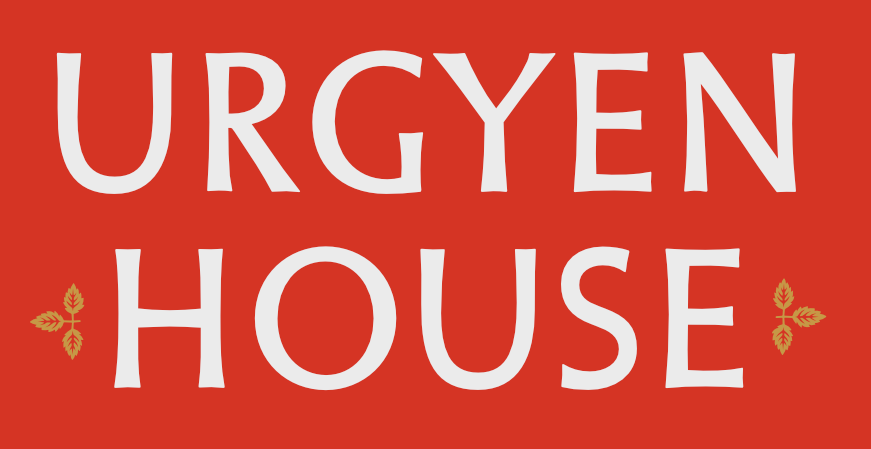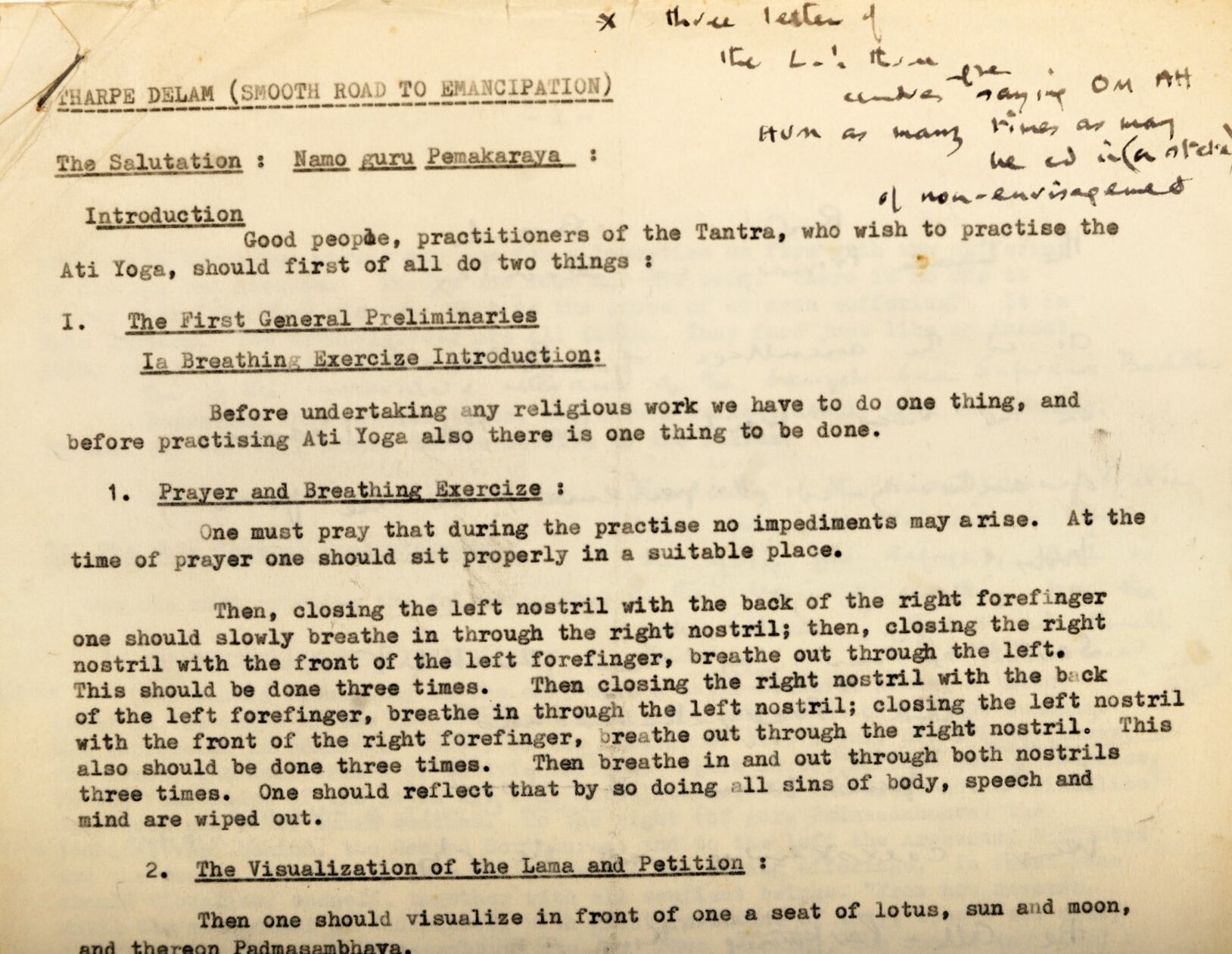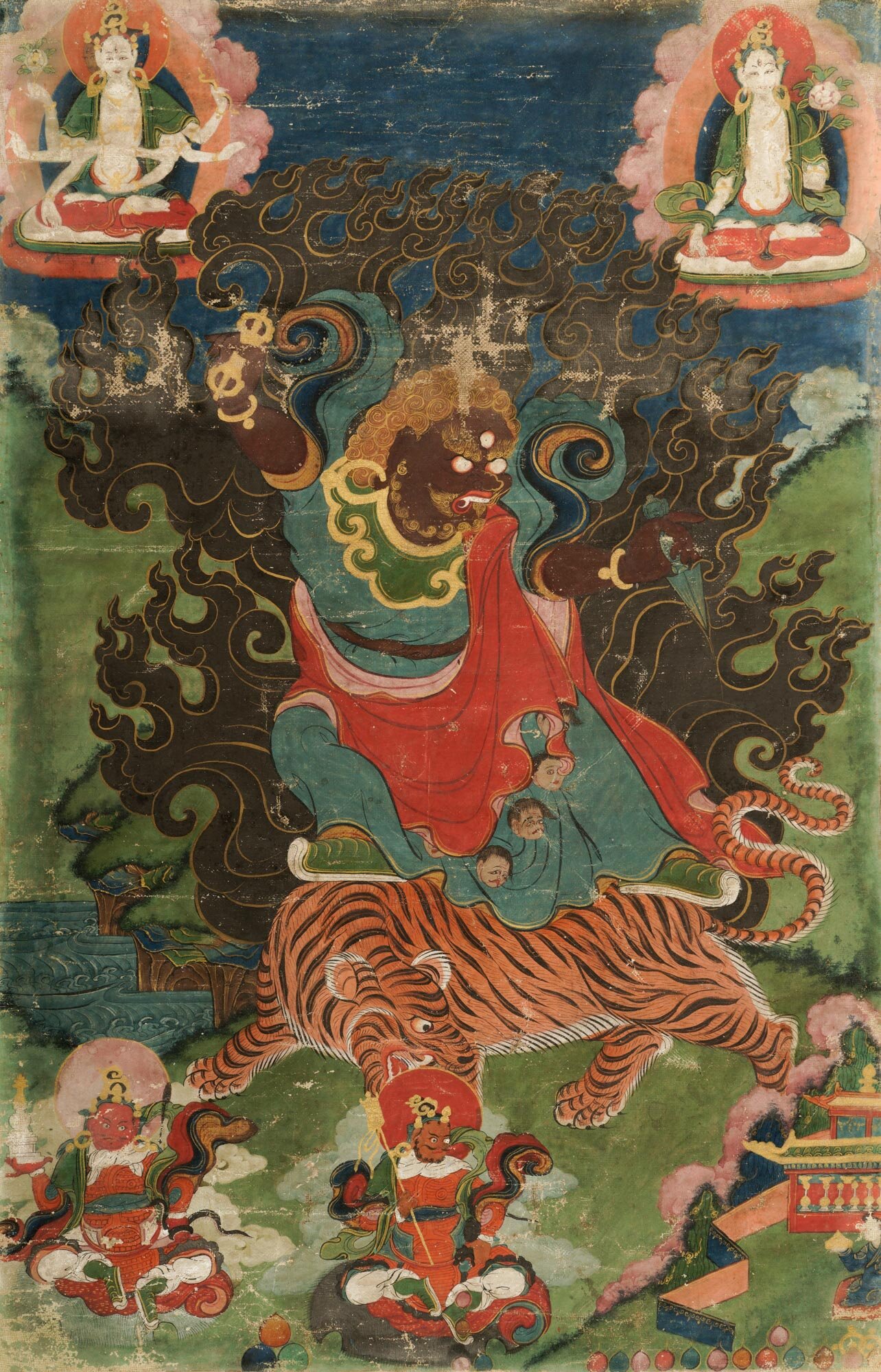Dudjom Dorje Khachöd (Kachu) Tulku (1920–1981) was the abbot of the seventeenth century ‘premier’ monastery in Sikkim, Pemayangtse Gompa, the ‘Monastery of the Glorious Lotus’, sometimes called the ‘Royal Monastery’. Though Khachöd Tulku was regarded as a Nyingma lama, by an accident of circumstance he was educated in a small Gelugpa gompa in Tibet from the age of seven until he was about twenty-one. He was by that time both the umzed, or ‘chant leader’, and a senior administrator of the gompa, which experience later stood him in good stead as Abbot of Pemayangtse. He was the senior disciple of Jamyang Khyentse Rinpoche in Sikkim and, at his encouragement, passed on some of what he had received from his teacher to Sangharakshita. He was a very humble lama, devoted to meditation, and took his visionary dreams very seriously. He bestowed on Sangharakshita the name ‘Urgyen’ when giving him the Padmasambhava initiation on 21 October 1962.
“Kachu Rimpoche was a cheerful, straightforward, down-to-earth person … undoubtedly very knowledgeable … the meeting at Everton Villa left me more impressed by him than ever and anxious to continue the acquaintance, despite the fact that he was living in western Sikkim and I in Kalimpong. As it happened, he was of much the same mind, with the result that in subsequent years we met a number of times and he came to occupy an important place in my life as friend and teacher.”
In the Sign of the Golden Wheel, The Complete Works of Sangharakshita, vol.22, p.327–8
Tharpe Delam Tibetan Text
This text, The Smooth Road to Emancipation, outlines a comprehensive set of ngondro or foundation practices from the Nyingma tradition. One of the central figures to be meditated upon is Guru Rinpoche, Padmasambhava, the great Tantric Yogi from India who helped pave the way for the establishment of Buddhism in Tibet. Ever since that time, Guru Rinpoche has been meditated on in different forms. These woodblock prints are the original ones referred to here:
“A man, probably a refugee, was squatting at the side of the road with a few items spread out in front of him on a piece of sacking. One of the items was a bundle of small Tibetan woodblock prints. As the man was asking only a few rupees for them, on an impulse I bought them, even though I could not read them and did not know what they contained. On my return to the Vihara I at once showed them to Kachu Rimpoche. They were all Nyingma texts, he told me, and the fact that I had come across them so soon after receiving the Padmasambhava initiation was a very auspicious sign. What was more, the longest of the texts was the well-known Tharpe Delam or ‘Smooth Path to Emancipation.”
Precious Teachers in The Complete Works of Sangharakshita, vol.22, p.474
Typed notes of Tharpe Delam
“Before his departure the Rimpoche gave me further instruction regarding the Going for Refuge and Prostration practice. I was to do it 20,000 times, though 100,000 times was desirable. He also gave me permission to make an English version of the Tharpe Delam with the help of Dhardo Rimpoche.
“I knew that there was a certain amount of rivalry between the Nyingma school, to which Kachu Rimpoche belonged, and the Gelug school to which Dhardo Rimpoche belonged, but I nonetheless had no hesitation in asking the latter’s help in making an English version of the Tharpe Delam, a Nyingma text. Apart from the fact that we were friends, and that I knew him to be free from sectarian exclusiveness, the tulkus of the line to which he belonged had been Nyingmapas until the time of his immediate predecessor.… He therefore readily agreed to help me with my task, and in the course of the next few months we spent many hours working together on the project, eventually producing a rough English version of the rather cryptic Tibetan text.”
Precious Teachers in The Complete Works of Sangharakshita, vol.22, p.474
Mandala Set
This mandala set of Sangharakshita’s is used during the meditative ritual offering from the Tharpe Delam text of foundation yogas. In gratitude to the Buddha and great masters for teaching the Dharma and keeping it alive throughout the ages, one imaginatively offers the entire universe to them.
Thangkas of the Eight Manifestations of Padmasambhava
The three thangkas displayed below are from a fuller traditional set of eight different forms or manifestations of Padmasambhava which Urgyen Sangharakshita bought in Kalimpong from a Tibetan monk
In accounts of Padmasambhava’s life there are many mythical episodes of this great master, who is most famed for the firm establishment of the Dharma in Tibet. Each of the thangkas depicts a different episode in which the master appears either wrathfully or peacefully, as monk or a yogi, in the form of a Buddha or a Protector. Together these stories and the images of the different manifestations build up a fuller and richer picture of the multi-dimensional character of Padmasambhava, the ‘Precious Guru’.
“To Kachu Rimpoche the Precious Guru was not just a historical person, nor even a figure of myth and legend; he was a spiritual reality, and it was as a spiritual reality that he experienced him when he gave me the Padmasambhava abhiṣeka on 21 October 1962.
“By this time it was twelve years since my momentous first visit to the Tamang Buddhist Gompa in Darjeeling, and eight years since I read The Tibetan Book of the Great Liberation, and although the Precious Guru may not have been a spiritual reality to me, as he was to Kachu Rimpoche, I was at least beginning to have a sense of his spiritual presence.”
Precious Teachers in The Complete Works of Sangharakshita, vol.22, p.472










